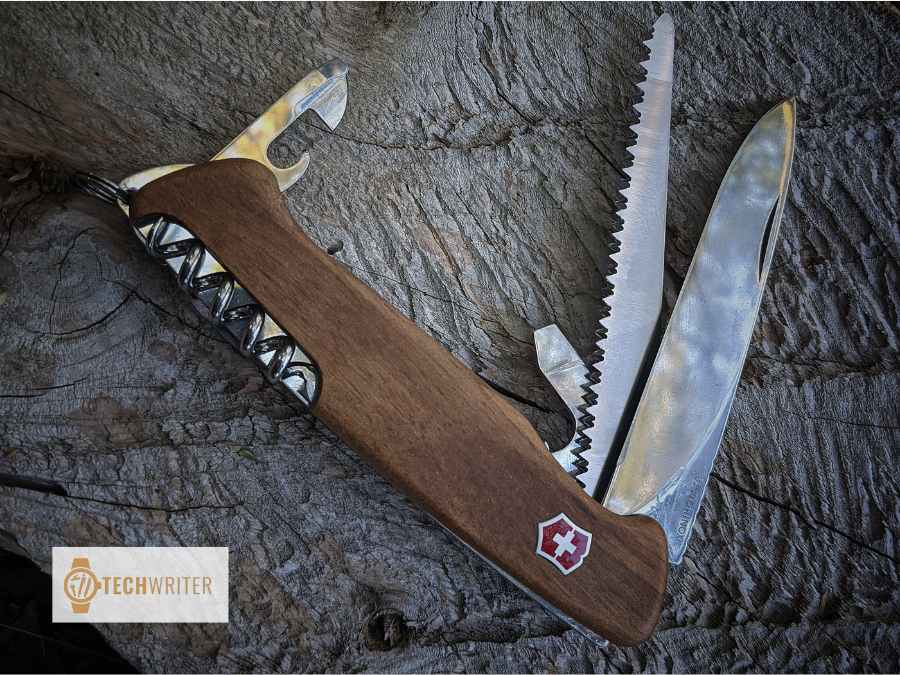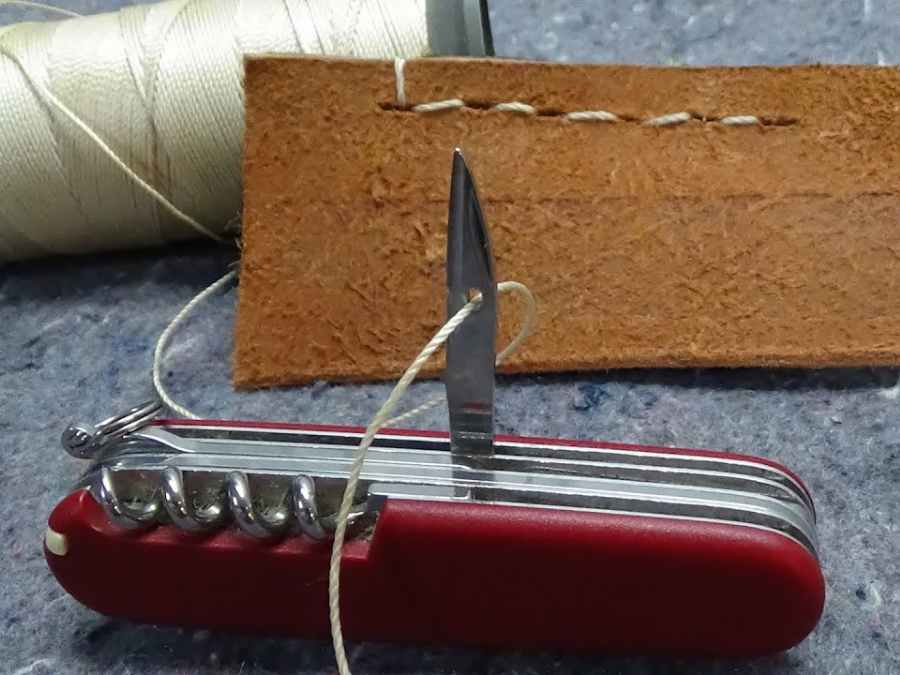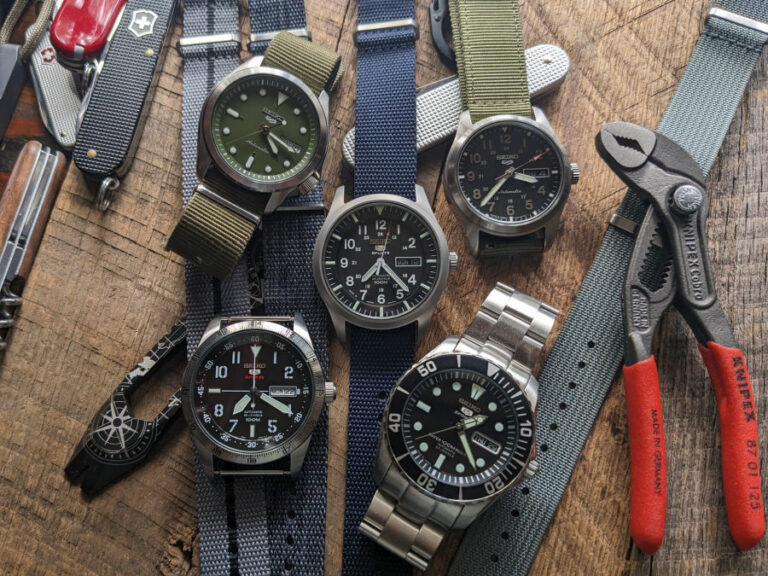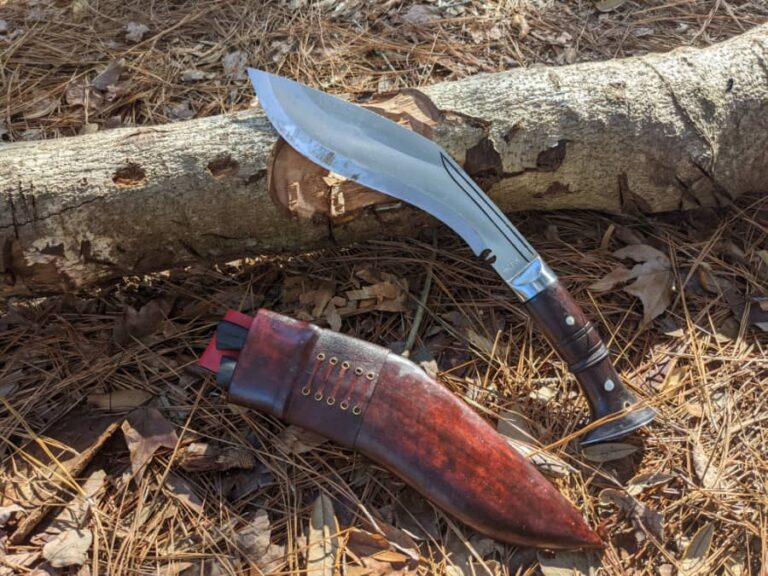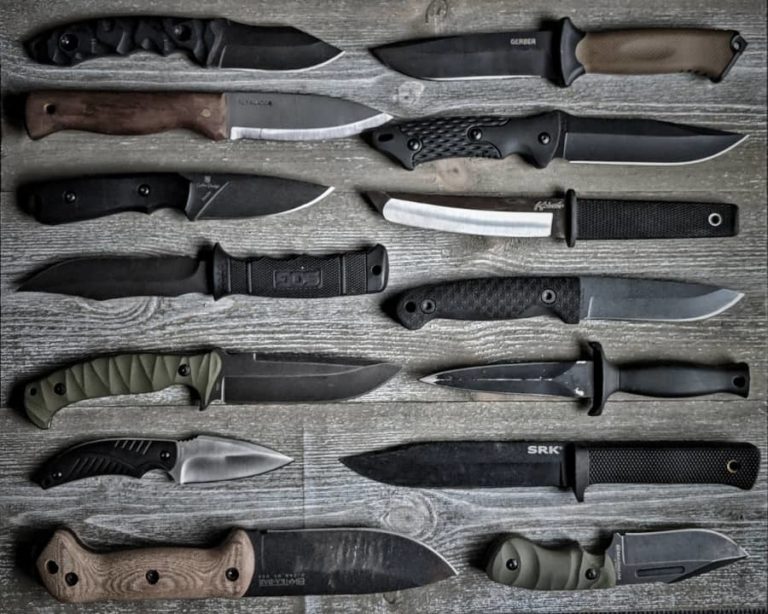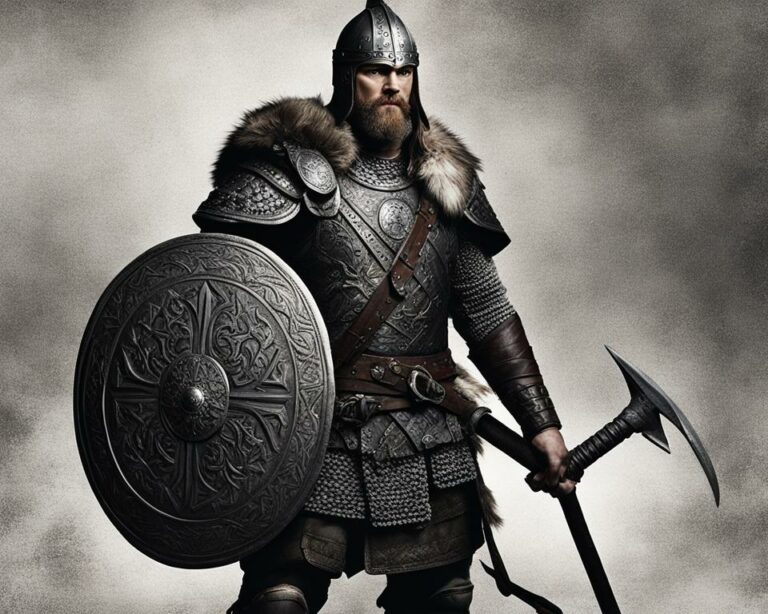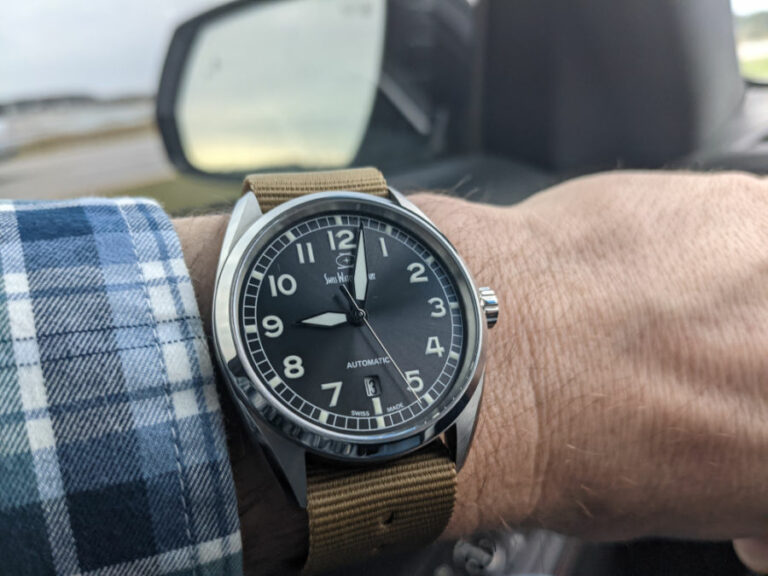The History of the Swiss Army Knife
Ah, the Swiss. We love them for their cheese, watches, and chocolates (Toblerone, anyone?). But of course there’s something more closely associated with Switzerland: the iconic Swiss Army Knife.
It seems like any traveler who visits Switzerland leaves with one (or even two) in his or her pocket. Perhaps you own a Swiss Army knife or know someone who owns one (perhaps your dad or grandfather) and you have been fascinated when, as a child, you saw them use it.
But have you wondered why it’s called a Swiss Army knife? What’s the history behind it? Why does it have worldwide recognition? Learn about the history of this captivating pocket tool here.
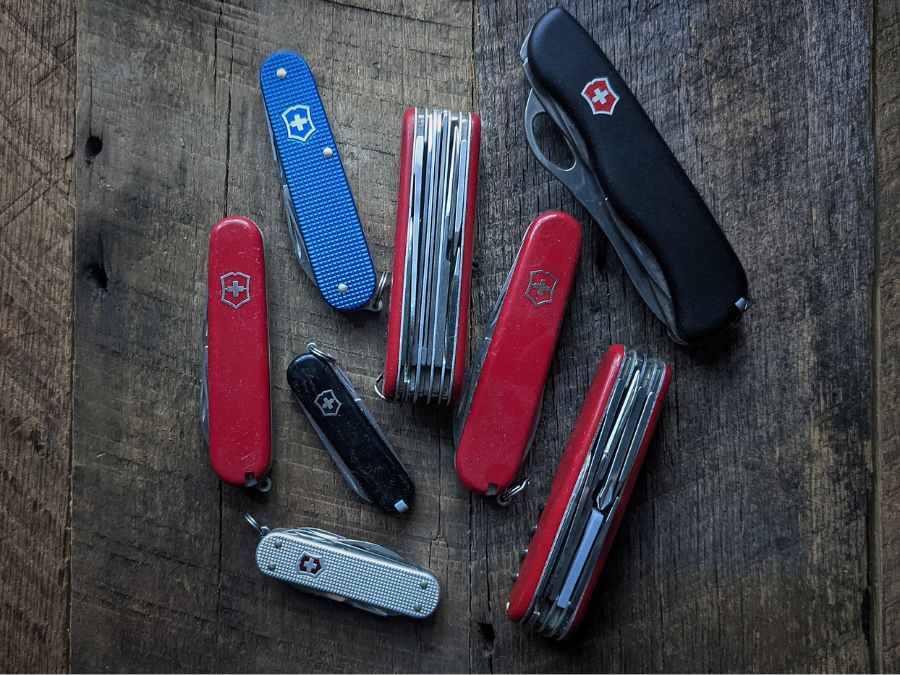
A Brief History of Pocket Knives
The earliest known pocket knives date to at least the early Iron Age. A pocket knife with a bone handle was found in Austria, dating to around 600-500 BC. Iberian folding blade knives made by indigenous artisans and craftsmen dating to the pre-Roman era have been found in Spain.
The peasant knife, farmer knife, or penny knife is the original and most basic design of a folding pocket knife, using a simple pivoted blade that folds in and out of the handle freely, without a backspring, slipjoint, or blade locking mechanism.
The first peasant knives date to the pre-Roman era, but were not widely distributed nor affordable for most people until the advent of limited production knives in cutlery centers such as Sheffield, England. This began around 1650, with large-scale production starting about 1700.
On the other hand, the idea of incorporating several tools into one small portable unit is also very old, dating back at least as far as Middle Roman times. However, many of these tools were based around eating.
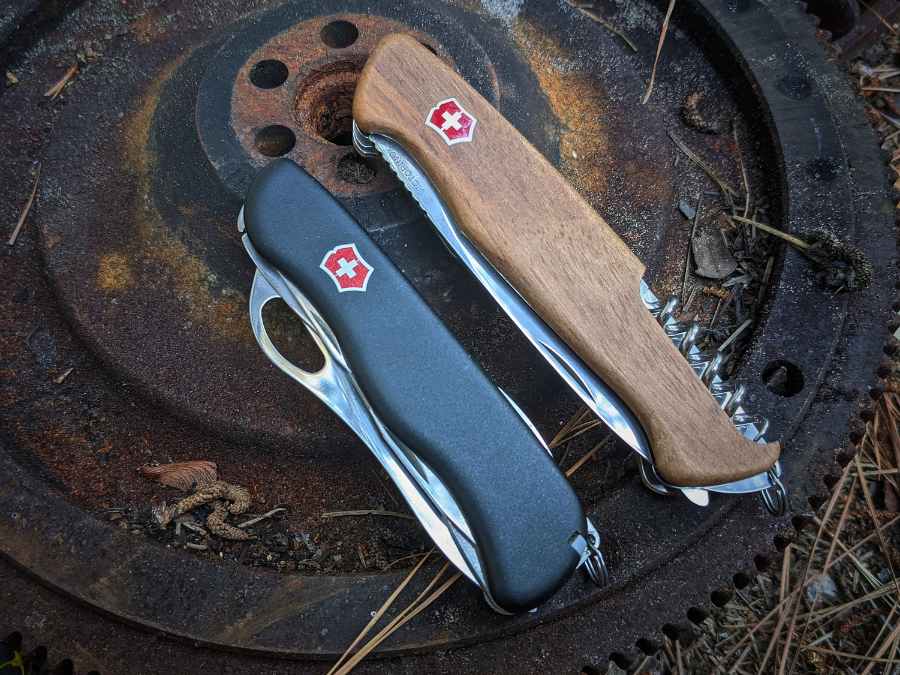
What Is a Swiss Army Knife?
The Swiss army knife is a multi-tool with a smart design that’s known all around the world.
Generally, it has a signature red color that bears a Victorinox or Wenger cross logo. It includes a main spear-point blade and various tools such as a screwdriver, can opener, or various others. These attachments are stowed inside the knife’s handle through a pivot point mechanism. But the Swiss Army Knife is more than a tool: it’s a symbol of craftsmanship and quality just as much as it’s a hallmark of practicality and usefulness.
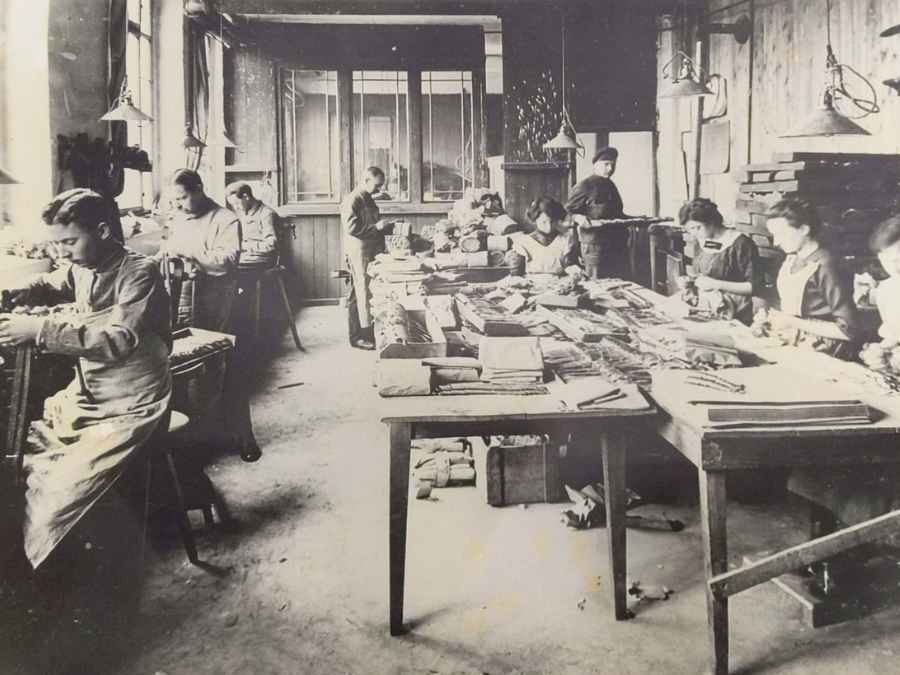
Photo credit: www.bladehq.com
Birth of the Swiss Army Knife
The story of the Swiss Army Knife, naturally, starts with the Swiss Army. The Swiss Army has existed in some form or another since at least 1291 and boasts a proud history of defending its mountainous homeland. In 1648, Swiss mercenaries played a key role in securing Switzerland’s independence from the Holy Roman Empire. They also participated in the Napoleonic Wars, which ended in 1815. Since then, Switzerland has adopted a stance of armed neutrality. The government requires every male citizen to serve at least 21 weeks in the military in order to maintain neutrality. This is where the story of the Swiss Army Knife begins.
In 1891 the Swiss War Technical Department replaced the Vetterli Model 1869/71 infantry rifle with the Schmidt-Rubin Model 1889. They needed a screwdriver to maintain the new rifle regularly, so they made the decision to issue each Swiss soldier a multi-functional knife. At the time there wasn’t a Swiss Company that could meet the demand for 15,000 knives, so the initial order for 15,000 knives was placed with the German knife manufacturer Western & Company from Soligen, Germany.
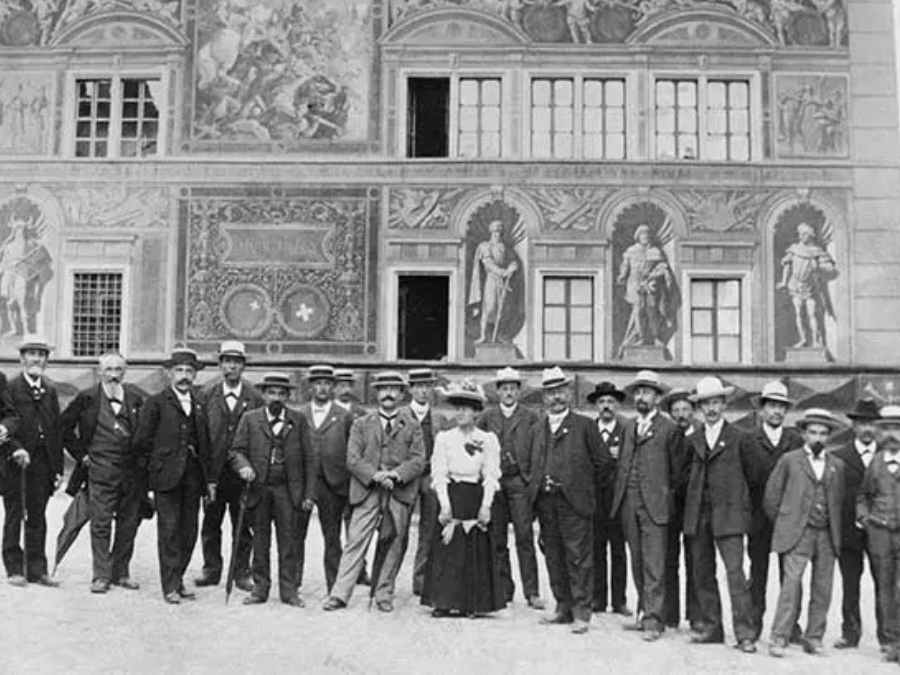
Picture from: www.victorinox.com
Real Swiss Craftsmanship by Karl Esner
Karl Elsener, a patriotic Swiss citizen, owned a surgical equipment company, and was trying to expand into knife manufacturing. Elsener was determined to see Swiss soldiers equipped with Swiss-made knives.
Competing with German manufacturers was a huge gamble as in the years before the first World War, the German Empire was one of the most industrious and affluent nations in the world. Many German companies were more than capable of producing tens of thousands of knives in a matter of months. Elsener, on the other hand, was constricted to what he could find in non-industrialized Switzerland
Resolute, Elsener joined forces with 30 other cutlers around Switzerland forming the Swiss Masters Cutlers Association. Using the small shops and water-powered forges in the town of Iback, Switzerland, Elsener and his union of artisans were able to produce enough knives to meet the army’s needs. But at a cost.
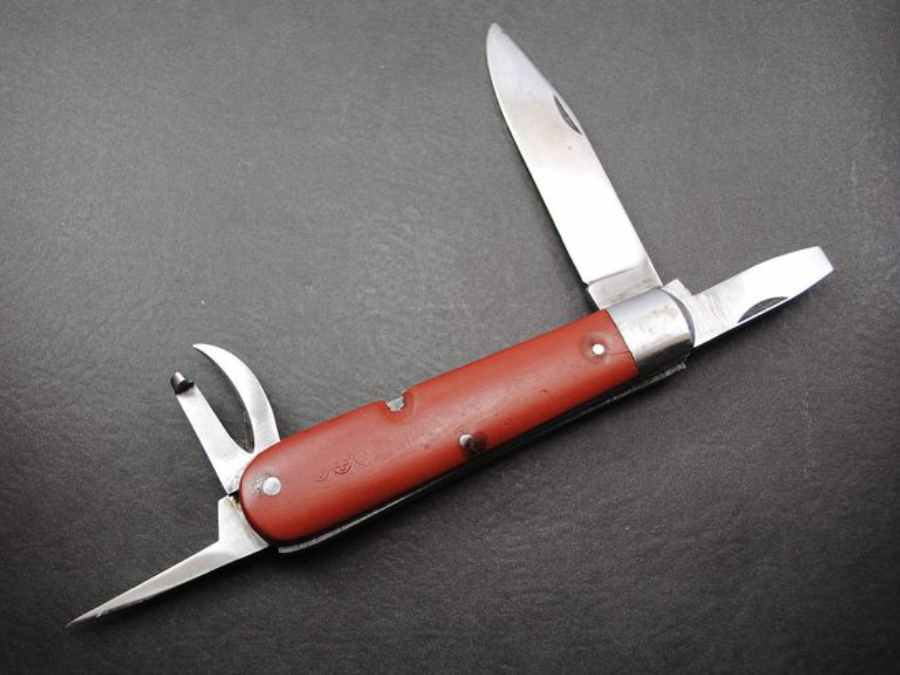
Source: za.pinterest.com
As driven and committed as his grassroot operation was, Elsener knew he couldn’t contend with the steam-powered German factories for any length of time. Even though he continued to meet the Swiss Army’s quotas, he was hemorrhaging money. His company was winding towards bankruptcy. Something had to change for Elsener.
Elsener took a closer look at the Model 1890 he’d been producing for years and decided to make it better. The model 1890 was a bulky and heavy knife. Karl Elsener wanted to design a knife that was much lighter and stylish while maintaining the same functionality.
Elsener envisioned something new and, accordingly, he engineered two special springs in the new design in 1897. This design enabled the knife to have tools on both sides of the handle using the special spring mechanism. It made it possible to operate six different tools in only two springs, a breakthrough design. The new design led to a more compact and functional folding pocket knife.
Even today, every Victorinox knife (the company Elsener formed more than 125 years ago) still uses this two-spring mechanism.
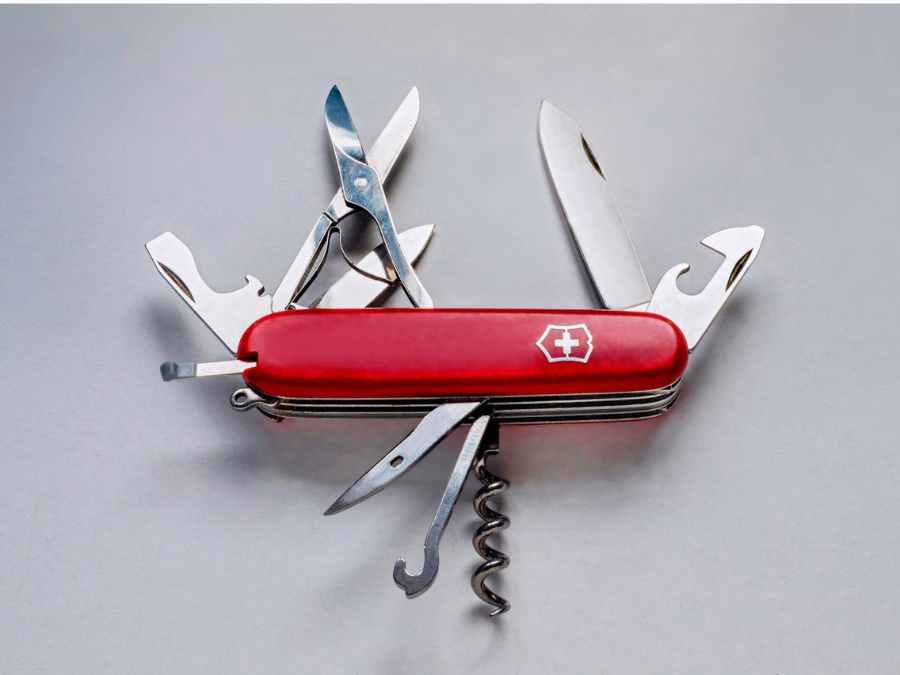
Source: www.americanexpress.com
Elsener named this new model “Schweizer Offiziers und Sportmesser” (Swiss officers and sports knives). This model went on to become the first iconic “Swiss Army Knife.” The design was officially patented on June 12, 1897.
Though the Swiss army did not officially commission this knife to the army, it was available for purchase at cutlery shops along with the Soldier knife. It became popularly referred to as the Officer’s Knife (which definitely added to its popularity).
This breakthrough in pocket knife design led Elsener to produce many other ingenious pocket knives. However, unlike the Model 1890, he identified these knives with specific names, like Student’s Knife, Farmer’s Knife, Cadet Knife, etc.
These multipurpose pocket knives caught the imagination of the public and became very popular, ultimately saving the company from bankruptcy.
The company didn’t have a name at first, but in 1909 when Elsener’s mother died, he named the company “Victoria” in her honor. In 1921, the company started using stainless steel in its knives. Stainless steel is also known as “inox” short for the French term acier inoxydable. “Victoria” and “inox” were then combined to create the name Victorinox which is so well known today.
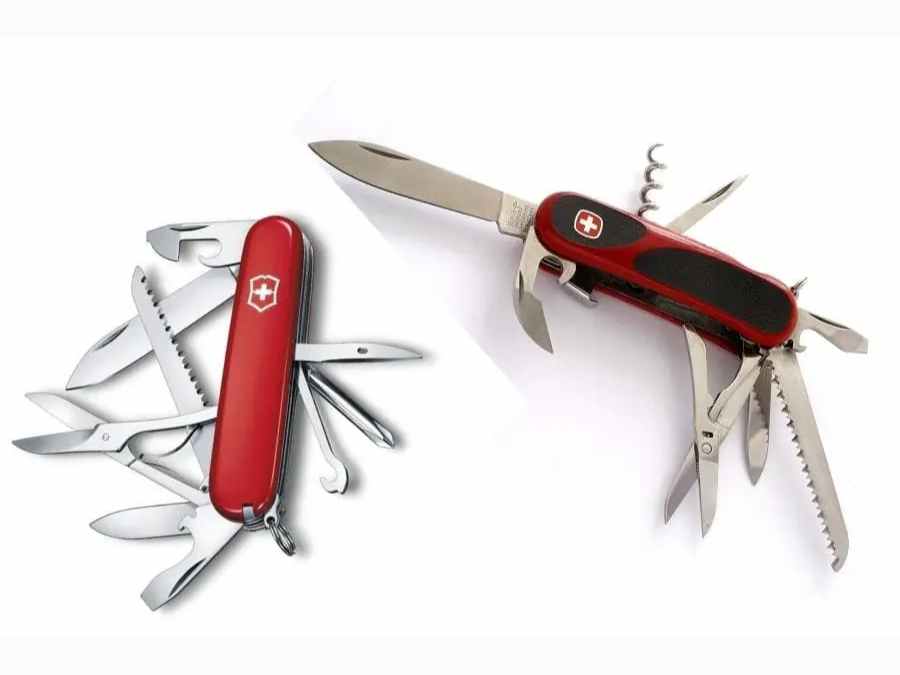
Picture from: www.gearpersonal.com
Competition
Elsener had barely got into his stride when a rival Swiss company, bought early on by Theodore Wenger, began making a very similar design.
In 1908, the Swiss Army decided to end their knife contract with German manufacturers, much to Karl Elsener’s delight. Equipping Swiss soldiers was a big part of the reason why he’d shifted his company into the knife-making business in the first place. But the Swiss government split the contract between Elsener’s company and Wenger’s. It’s unclear if the Swiss government split the contract in order to avoid showing regional favoritism or if they were simply hoping that competition would keep the costs lower.
Elsener was concerned that the brand he worked so hard to create would be diminished. That prompted the name change in 1921. Elsener also came up with the iconic white cross and shield design found on every one of Victorinox’s products. Finally, Victorinox advertised their knives as the “Original Swiss Army knives” and Wenger began advertising theirs as “Genuine Swiss Army knives.”
The competition between Wenger and Victorinox would last 97 years, with neither company able to gain the upper hand on the other. In 2005, Victorinox was finally able to acquire their biggest competition. By 2013, Victorinox had assimilated Wenger’s knife brand. The acquisition made Victorinox not only the original Swiss Army Knife, but the only authentic Swiss Army Knife.
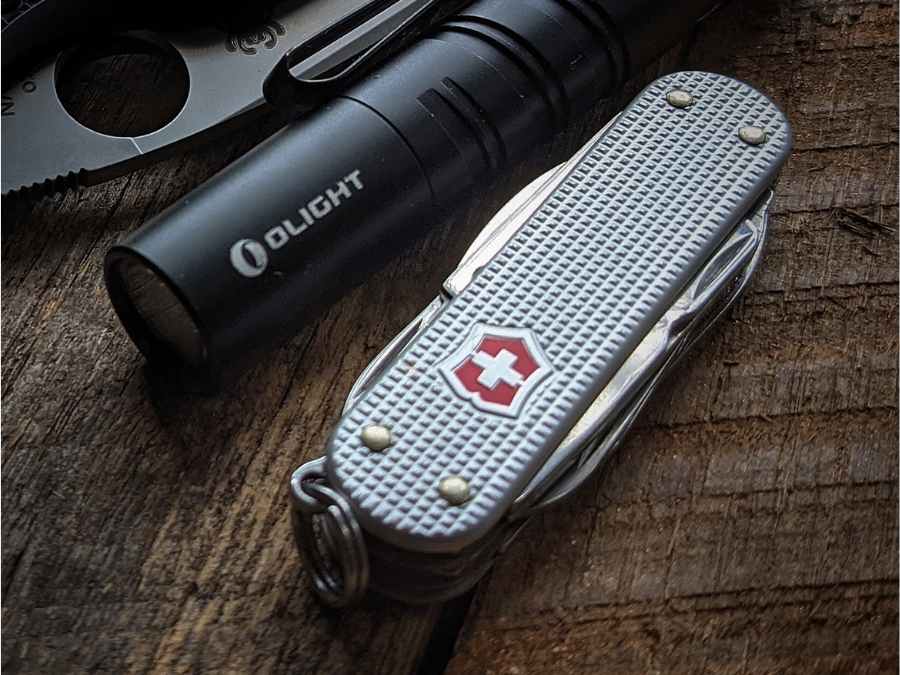
How the Swiss Army Knife Got Its Name
Despite their inventive design and remarkable efficiency, Swiss Army Knives, Offiziersmesser as they were most commonly called, were really only known throughout Switzerland, Germany, and France.
The knives didn’t gain international prominence until the 1940s when WWII exposed the knives to American soldiers who struggled to pronounce the original German name and began calling it the Swiss Army Knife, which was obviously easier to say. The name caught on, and this is the moniker for the tool around the world today.
American troops bought Swiss Army Knives en masse before returning home. Because the exchange rate in post-war Europe heavily favored the dollar, most American soldiers could afford multiple Swiss Army Knives, and they bought them for themselves, their brothers, fathers, sons, and spouses as souvenirs.
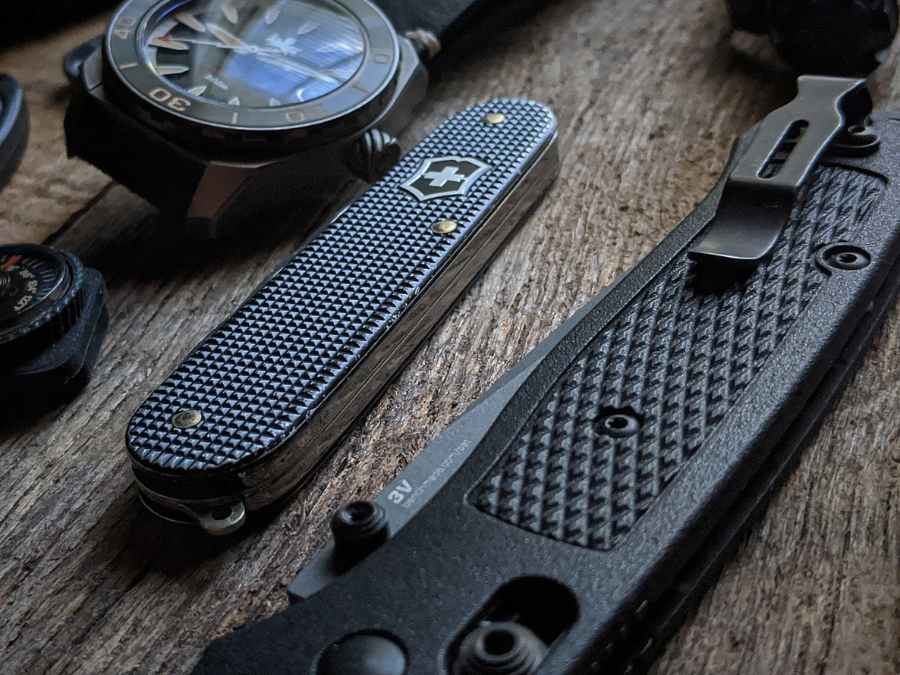
To absolutely nobody’s surprise, the flood of red scaled knives pouring into the United States proved to be just as popular and useful for civilians during peacetime as they were for European soldiers across two world wars. They rapidly became the go-to everyday carry knife for outdoorsmen, adventurers, and do-it-yourselfers around the world.
The name “Swiss Army Knife” eventually became so famous that Victorinox patented it and started promoting all such pocket knives manufactured by them with this brand name. So, in a way, the Americans gave the ubiquitous Swiss Army Knife its name.
Today, the Swiss Army Knife is a well-known brand all over the world. Owing to how versatile and capable these small pocket knives are, the term “Swiss Army Knife” is also used as a figure of speech in any scenario indicating extreme utility.
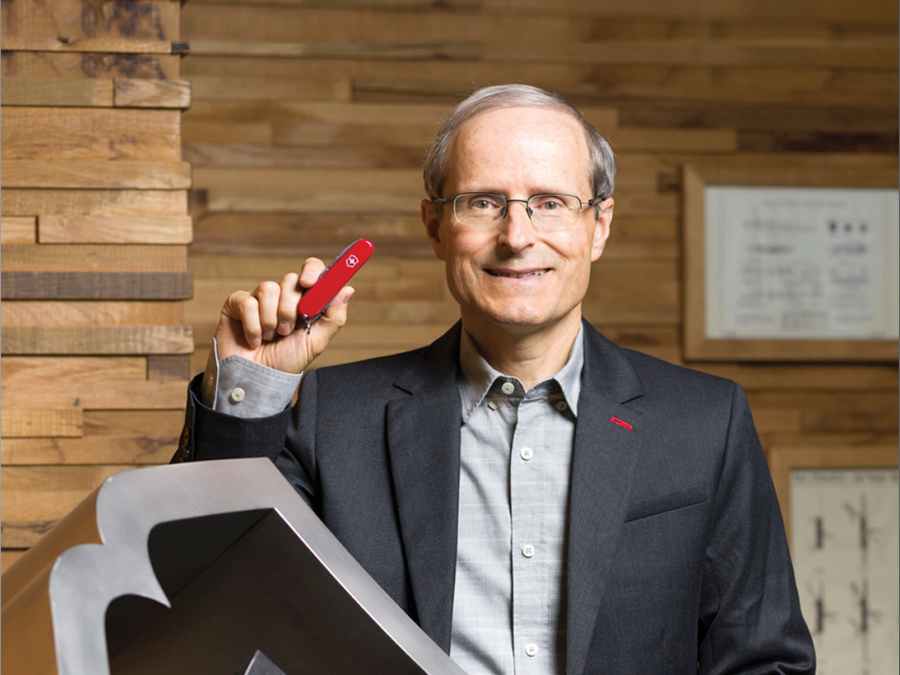
Source: www.prisma-reports.com
A Family Owned Company
Victorinox, right from its inception until today, has remained a family-owned company and has always been headed by an Elsener.
In 1884, Karl Elsener set up the foundation of the company with the support of his mother. He was succeeded by his son Carl Elsener II, and then his grandson Carl Elsner III, and finally his great-grandson Carl Elsner IV.
Carl Elsener II is credited with introducing automation in the Swiss Army Knife manufacturing. He set up the world’s first all-electric hardening plant in Ibach, Switzerland.
Carl Elsener II, also referred to as Carl Elsener Senior, expanded the business significantly. Under his leadership, the Swiss Army Knife became a global phenomenon. The company grew from a workforce of 80 employees to more than 1,000 employees under his watch.
It was also during the time of Carl Elsener Sr. that Victorinox began producing more than 25 million knives per year.

How 9/11 Affected Victorinox
After the events of 9/11, security was tightening in all domestic and international airports. New rules were introduced which prevented any sort of sharp object to be carried along on the flight in the hand luggage. This was accompanied by banning the sale of sharp objects in airports, including pocket knives.
These rules hit companies like Victorinox and Wenger hard. Both used to sell a lot of Swiss Army Knives in airport shops. This ban made sales drop by 30% overnight. There were reports that over the subsequent period the sales of the Swiss Army Knife plunged to 50%.
As we have seen, Wenger did not survive this crisis and was acquired by Victorinox in 2005.
However, Victorinox responded to this adversity by diversifying its product line. Victorinox today has five product categories including Swiss Army Knives, Watches, Fragrances, and Travel Gear.
The value and worldwide recognition of the Swiss Knife brand helped in the marketing and distribution of other product categories.
Some Interesting Facts about the Swiss Army Knife
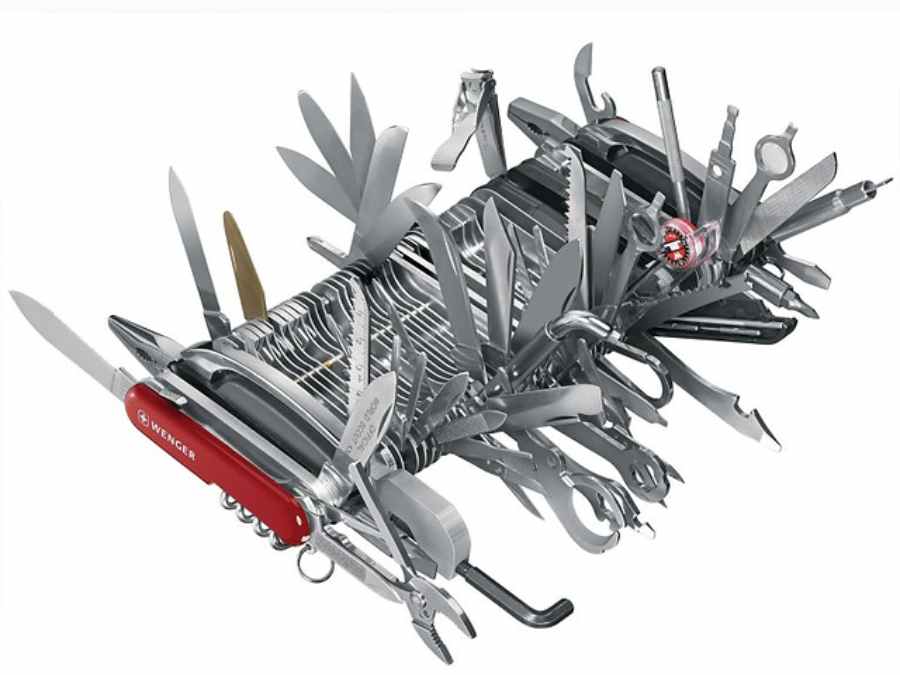
There Are Many Swiss Army Knife Models
Victorinox is constantly expanding their product line, offering new models to replace the outdated ones. In their pursuit to create the right tool for every job, Victorinox puts common tools into pocket knives creatively.
They’ve also added quite a few uncommon tools to their models as well. Some of the tools you can find in Victorinox Swiss Army knives include (but are definitely not limited to) a clock, a USB drive, a laser pointer, a compass, a magnifying glass, a flashlight, a ballpoint pen, and a golf tee punch. Over the years, Victorinox has made at least 800 different spreads across more than 350 models. No matter which tools you’re looking for, there’s a Swiss army Knife for you.
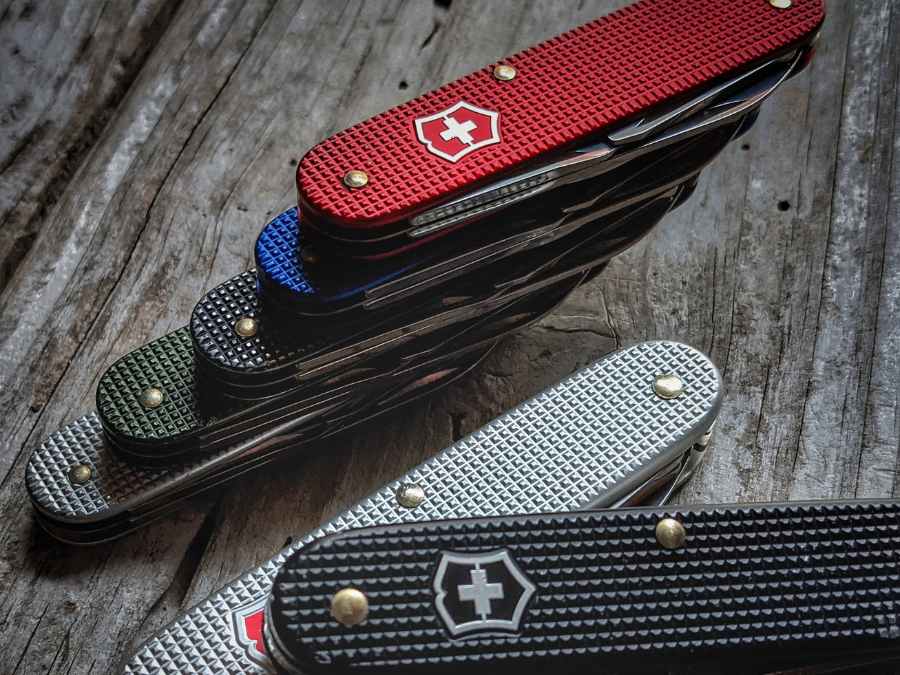
Swiss Army Knives Are Available in Many Colors, Not Just Red
You probably visualize the Swiss Army Knife with a red plastic handle (don’t worry, that’s probably how everyone else sees it as well). However, Swiss Army Knives come in a variety of colors and materials.
For example, you can get most models with a handle made out of black plastic, red plastic, translucent red plastic, translucent blue plastic, or even hardwood.
Additionally, some recent models come with black rubber grips on the handle to facilitate outdoor use. Victorinox makes knives for all tastes and personalities.
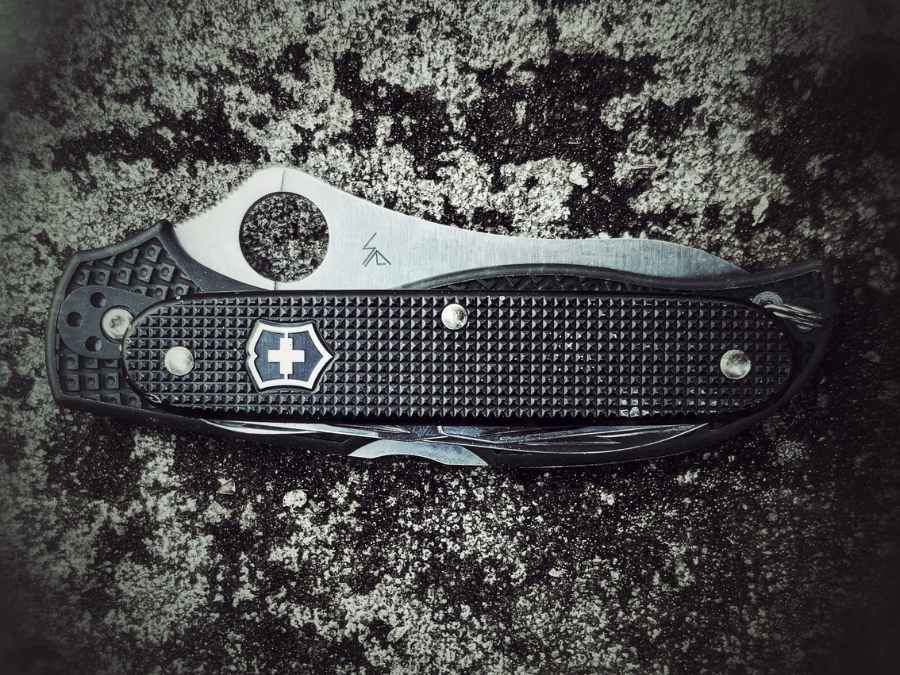
The Knives Issued to the Swiss Army Are Not Red
No, the actual Swiss Army Knives issued to soldiers are not red. But that makes sense. Red is not the optimal color if you want to cross open terrain without being spotted. The Swiss military-issued knives lack the iconic red plastic handle and instead have a dark aluminum grip which is much more practical.
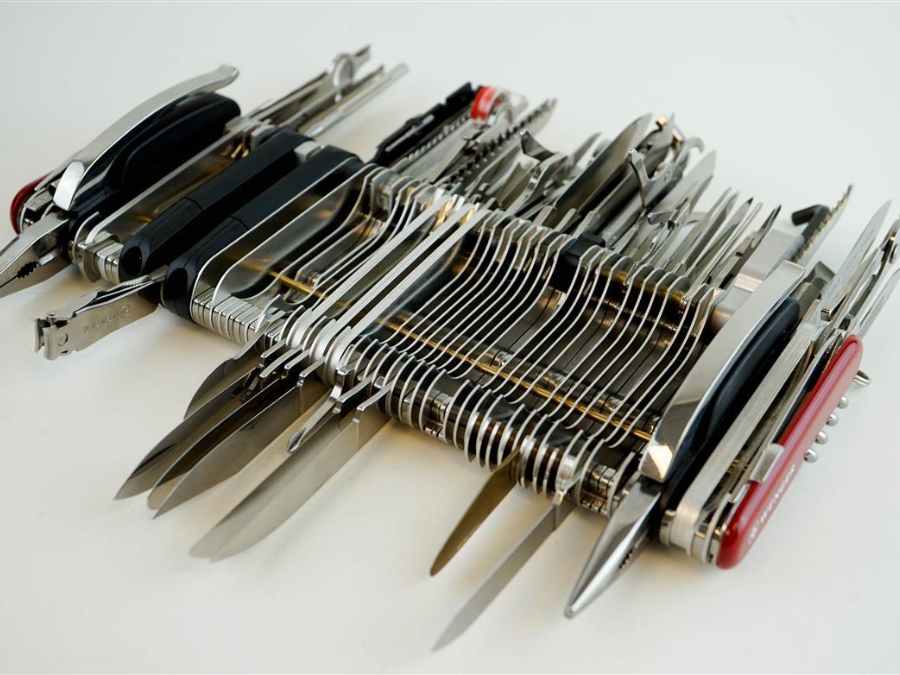
The Biggest Swiss Army Knife Weighs About 3 Pounds
The largest Swiss Army Knife in the world is the Wenger Giant. It has 87 implements and 141 functions taking 49 layers to fit every tool that Wenger made before Victorinox took over. When it’s closed, it measures a respectable 3.25 inches long. Unfortunately for your pockets, it’s also over 9 inches thick and weighs about 3 pounds.
You won’t be carrying this Swiss Army Knife in your pocket; it’s a collector’s item instead. The Wenger Giant is no longer in production, but if you have room in your backpack and about $5000 to spare you might find one online.
The Pointed Tool with a Hole in the Knife Functions as a Needle
Yes, the pointed tool (called a ramen) on the back of almost every Swiss Army Knife has a hole at the top so it can be used as a needle. The function of the reamer is so you can punch holes in the fabric and then you can use it as a needle to sew the fabric up. This is super useful when you need to repair something in the wilderness.

Image from: blog.knife-depot.com
The Swiss Army Knife Has Been Used By Astronauts in Space
In the 1970s, NASA ordered 50 special knives (Master Craftsmen Model) for their astronauts. The astronauts used these knives in mission simulation and later in actual space missions. At that time not everything was controlled by software like today, and the knives were perfect tools for minor repairs.
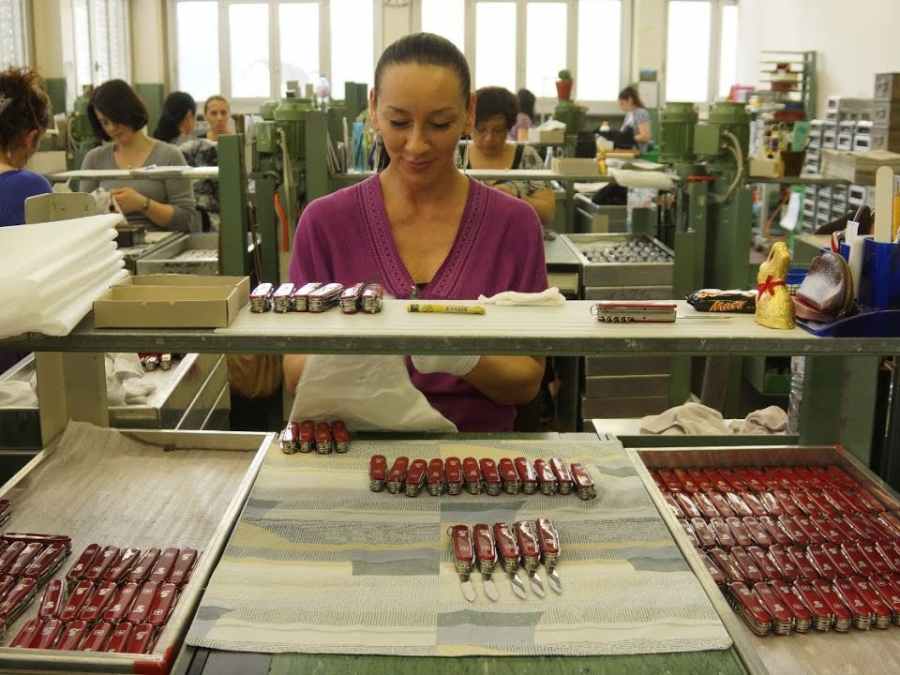
Source: www.youtube.com/watch?v=0MNKXS6A_fM
Nowadays, Swiss Army Knives Are More for Regular People than for the Swiss Army
Today Victorinox produces some 25,000 knives for the Swiss Army every year. This might seem like a lot, but in reality is less than a day’s production for the company, which produces about 50,000 knives a day. The rest of these knives produced in the year accumulates to a whopping 15,000 million a year and are mostly exported to foreign civilian markets.
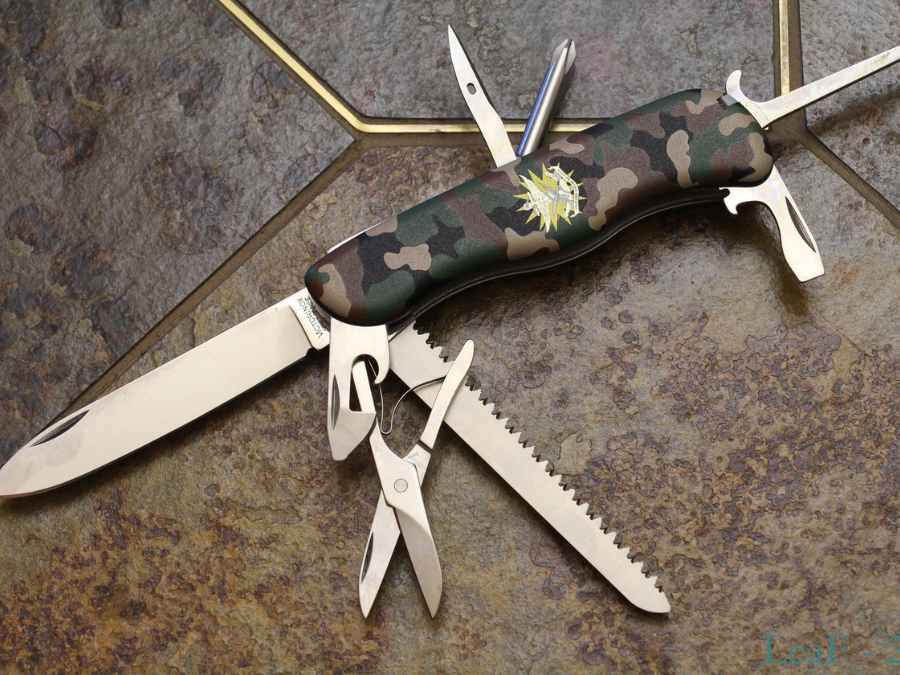
Photo credit: www.k88mall.com
Many Other Countries Have Their Own “Swiss Army Knives”
About 20 countries have developed their own version and variations of the Swiss Army knife. These nations include the United States, Germany, Norway, the Netherlands, Malaysia, and France. They are very similar to the original Swiss Army knife and usually contain the exact same tools or a very close copy.
Just keep in mind, as well, that there are many people who wish they could benefit from the Swiss Army knife’s popularity, in other words, beware of the fakes out there. Make sure your knife reads “Victorinox Swiss made” on the large blade, and that the handle has either the Victorinox or Wenger logo.
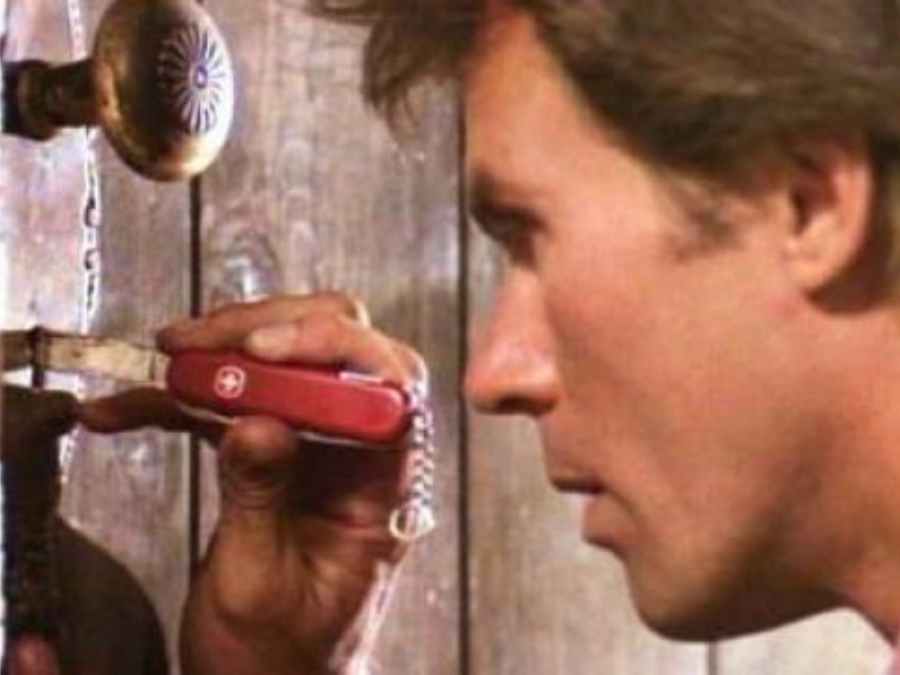
Image: www.spotern.com
The Swiss Army Knife Is a World Famous Survival Tool
The multi-functional tool helped a certain world-renowned adventurer get out of all kinds of tight spots….again and again. We’re talking about Angus MacGyver here, the man who could do anything thanks to his Swiss Army knife. But he is not the only one. The Swiss tool also appeared in Lethal Weapon 3 and The Fantastic Four, as well as in the hands of Dana Scully in the X-Files series and in those of Matt Damon in The Martian.
Frequently Asked Questions
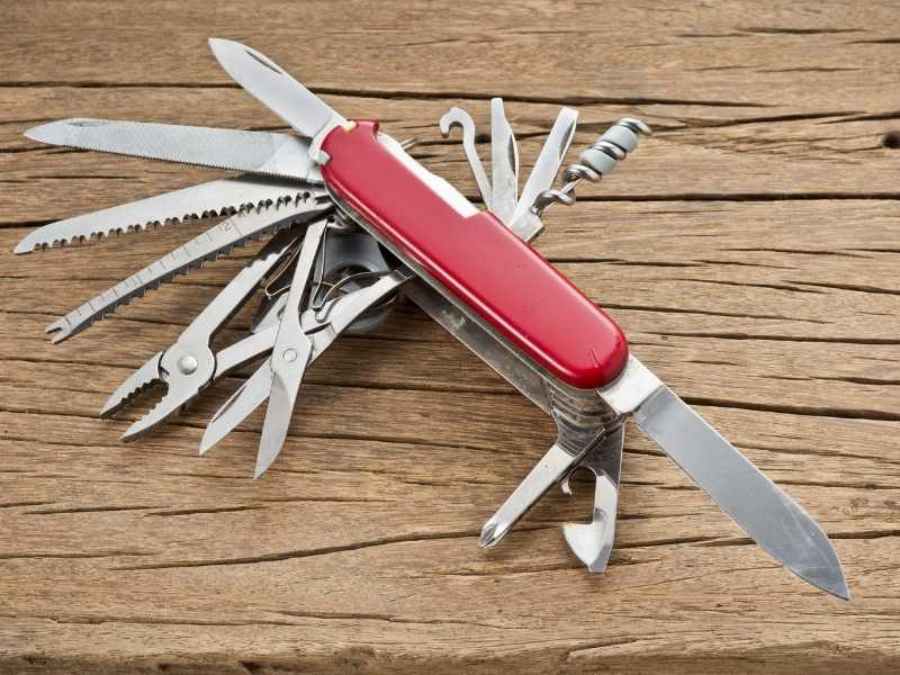
What is the point of Swiss Army knives?
Swiss Army knives were originally designed by Karl Elsener in Switzerland as a tool for troops to use while in the field. In the more than 125 years since, it has become a popular multi-tool that you can keep at home, in your bag or car, or take out camping with you.
Is a Swiss Army Knife allowed on a plane?
No, you are not allowed to bring a Swiss Army Knife (or any other blade) onto an airplane. If you bring one and it is found during the scanning of your carry-on luggage, it will be confiscated.
If you’re a frequent flier, you can appreciate how convenient it would be to have a Swiss Army Knife. Ever adaptable, Victorinox has you covered. The Victorinox Jetsetter features seven of the most useful tools you could want for everyday carry, but without a blade. Instead, it features a small pair of scissors, a bottle opener, a Phillips screwdriver, wire stripper, keyring, tweezers, and a toothpick.
Are Swiss Army Knives Durable?
Victorinox takes the quality of its Swiss Army knives seriously. Every knife is made from stainless steel to stop it from rusting, and every Swiss Army knife comes with a lifetime warranty, so Victorinox literally stands behind the quality of its production.
However, the lifetime warranty only covers the stainless steel and tools. It doesn’t cover the sides, which are often the first thing to pop off after a lot of use. (Note, you can easily glue the side back on if need be.) If you look after a Swiss Army knife, it will last you a lifetime and you can hand it down through the family.
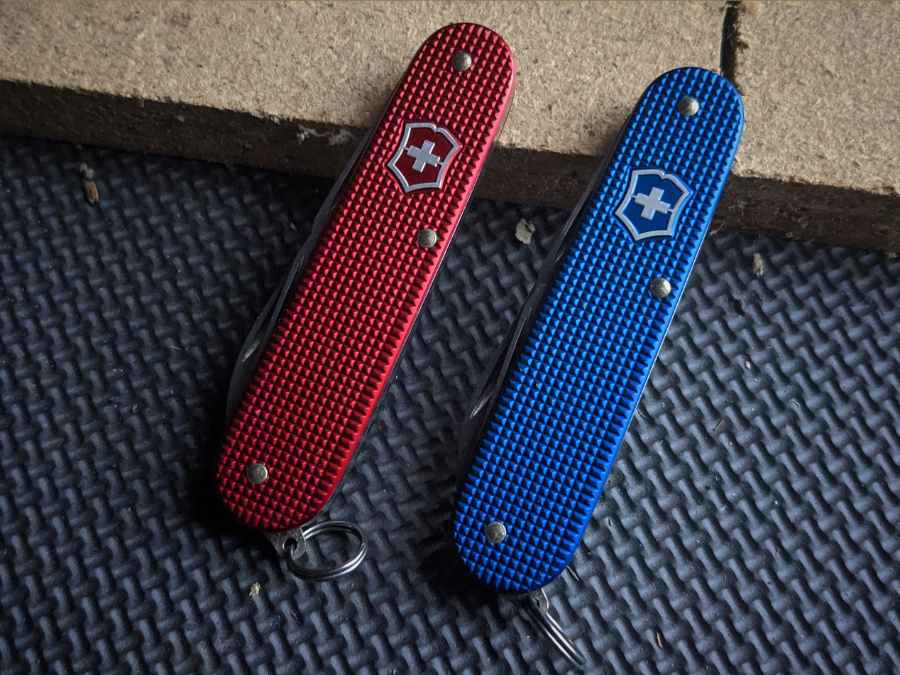
Final Thoughts
With a long history (well over 125 years) Victorinox has perfected the pocket knife design and made the Swiss Army Knife a world-famous brand. These pocket knives are nowadays used in all aspects of life.
From the Swiss Soldier pocket knife to a global brand, Victorinox has come a long way. Today, Swiss Army Knives are sold in more than 130 countries all over the world. The quality, affordability, and longevity of the product ensure that you will have a long-term relationship with your favorite trusty pocket knife.
You don’t need to be a professional to know that among all the multipurpose knives on the market, the Swiss Army Knife (SAK, for those in the know) remains a must have. Embossed with its white cross logo, it has even become a work of art and is on display in MOMA in New York, the Design Museum London, and in the Neue Sammlung in Munich.

Blair Witkowski is an avid watch nut, loves pocket knives and flashlights, and when he is not trying to be a good dad to his nine kids, you will find him running or posting pics on Instagram. Besides writing articles for Tech Writer EDC he is also the founder of Lowcountry Style & Living. In addition to writing, he is focused on improving his client’s websites for his other passion, Search Engine Optimization. His wife Jennifer and he live in coastal South Carolina.

